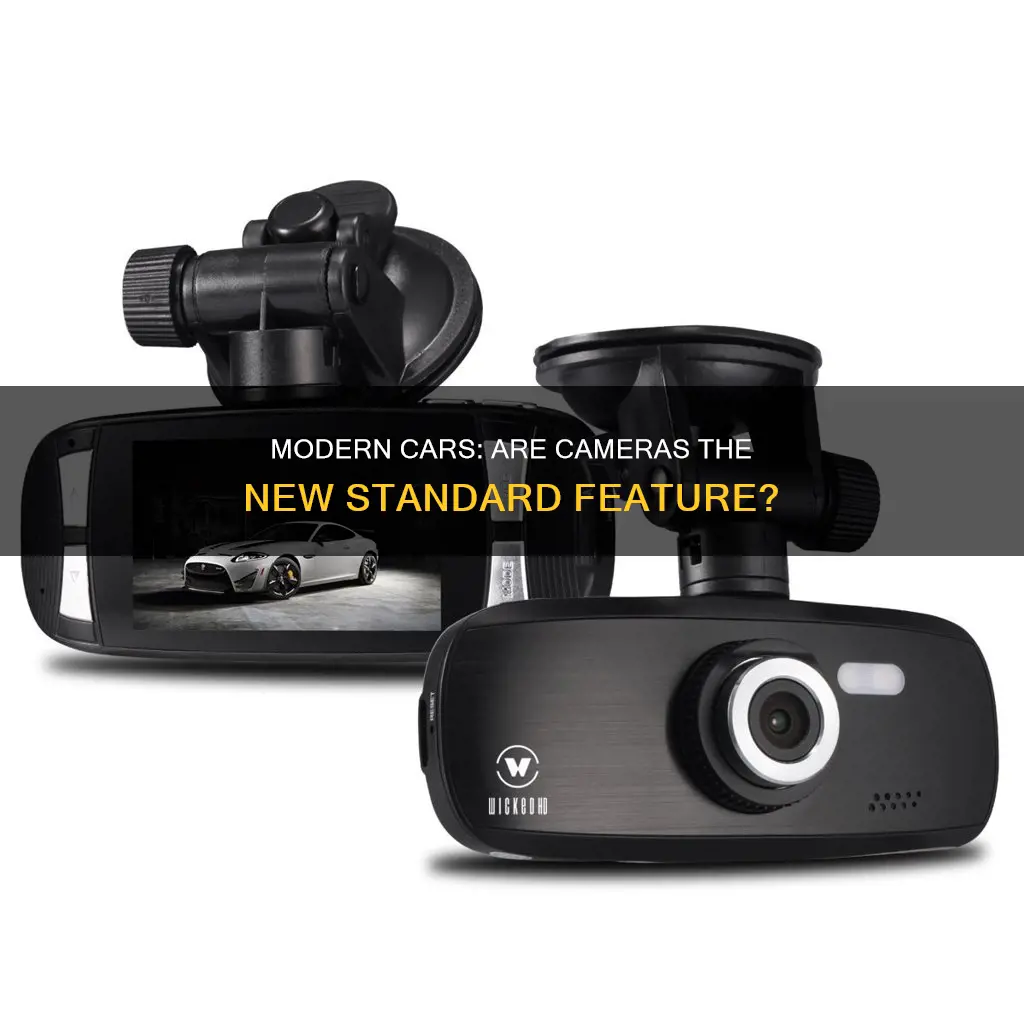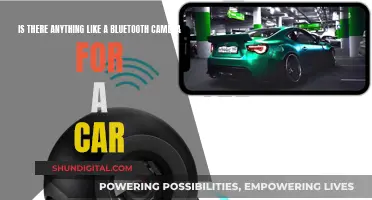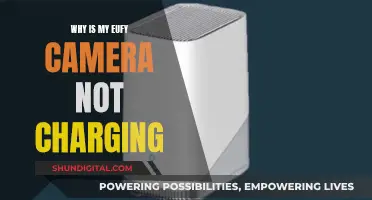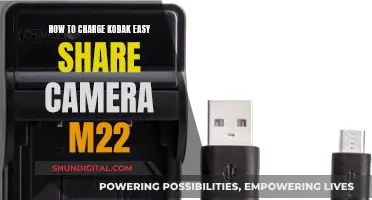
In-car cameras are becoming increasingly common, with some sources suggesting that most new cars have them. They first started appearing in luxury vehicles around two decades ago and have since become more commonplace. In-car cameras can be used for a variety of purposes, including improving vehicle security, safety, and convenience, as well as enabling autonomous driving features. While some people argue that built-in dashcams are more of a novelty than a must-have technology, others believe that their ability to document accidents, road rage incidents, and breaches in vehicle security makes them a valuable addition to vehicles.
| Characteristics | Values |
|---|---|
| Camera Purpose | To improve safety, reduce accidents, and prevent injuries or fatalities when reversing |
| Camera Angle | Rearview, backup, surround-view, bird's eye view, or 360-degree view |
| Camera Display | Dashboard screen, infotainment display, or rearview mirror |
| Camera Guidelines | Static or dynamic guidelines to illustrate proximity to objects |
| Camera Activation | Automatic when reversing or manually activated |
| Camera Recording | Continuous or accident-triggered recording, with footage stored on SD card, USB, or in-built memory |
| Camera Brands | Toyota, Nissan, Chevrolet, Tesla, BMW, Subaru, Cadillac, Mercedes-Benz |
What You'll Learn

Backup cameras are required on all new cars in the US
Backup cameras are now a standard feature on all new cars in the US. Since May 2018, all new cars sold in the US have been required by law to have backup cameras and video displays to improve safety and prevent accidents. This law was passed by Congress in 2008, with a mandated rule by the National Highway Transportation Safety Agency in 2014.
The requirement for backup cameras is aimed at reducing the number of accidents and fatalities caused by limited visibility when reversing. This is particularly dangerous for children, the elderly, and pedestrians, who often fall victim to "backover" crashes. Backup cameras improve the driver's field of vision by up to 300% and help eliminate blind spots caused by pillars, passengers, or seats.
The National Highway Traffic Safety Administration (NHTSA) has faced criticism for not implementing this rule sooner, as it is estimated that over 200 people are killed and 12,000 injured each year due to such accidents. However, with this new law in place, there is hope for a significant reduction in these tragic incidents.
In addition to safety benefits, backup cameras can also provide financial advantages. Some insurance companies offer safety feature discounts for vehicles equipped with backup cameras, as they are proven to save lives.
While backup cameras are now standard on new vehicles, it is important to note that older cars are not required to have them. However, backup camera installation is a viable option for those seeking to enhance the safety of their non-compliant vehicles.
Exploring the HDF Mode S8 Camera
You may want to see also

Dash cams are becoming standard in newer cars
In recent years, several car manufacturers have introduced vehicles with factory-installed dash cams, including Subaru, Cadillac, Chevrolet, Tesla, BMW, and Toyota. These dash cams offer a range of features, from adaptive cruise control and pre-collision braking detection to 360-degree recording capabilities and night vision.
For example, the Subaru Crosstrek, a small SUV, is equipped with the Subaru EyeSight safety system, which includes two wide-angle cameras that assist with driver-assist features. Similarly, Cadillac offered the CT6 model with four full HD cameras strategically placed around the exterior, providing a 360-degree recording feature called the Surround Vision Recorder.
Tesla, a pioneer in automotive technology, utilizes eight surrounding cameras in the Tesla Model S, which can be used for dash cam functionality. Known as TeslaCam, these forward-facing cameras allow drivers to record and store video footage on USB storage devices.
While dash cams are becoming more prevalent, they are not yet standard across all new vehicles. Some manufacturers offer them as part of optional upgrade packages, while others provide them as standard features.
In addition to dash cams, many modern cars are also equipped with backup cameras, which have been mandated in the United States since 2018. These cameras improve safety by reducing blind spots and enhancing rear visibility, helping to prevent accidents, especially when reversing.
The integration of dash cams and other camera systems in cars is a significant step towards improving road safety, security, and driver assistance. As technology advances, we can expect dash cams to become even more prevalent and sophisticated, providing drivers with enhanced peace of mind and protection.
Converting Camera Raw to JPEG with Adobe Bridge
You may want to see also

Surround-view cameras can provide a bird's-eye view of a car
Many new cars are now being equipped with cameras that provide a bird's-eye view of the vehicle and its surroundings. This technology, often referred to as a surround-view camera system, offers a top-down view as if seen from above the car.
These camera systems typically use four strategically placed cameras to capture video signals that are then fed into an image-processing program. This program knits the individual inputs together to create a synthetic but positionally accurate top-down view. Modern systems offer such lifelike detail that it can be hard to believe the images were not taken from above the vehicle.
The benefits of a bird's-eye view camera system are significant. Firstly, it eliminates blind spots, making driving safer and easier. Secondly, it assists with parking, particularly in tight spaces or when parallel parking, by providing a clear view of the vehicle's surroundings. Additionally, the system can offer multiple viewing options, allowing drivers to see the sides of the vehicle, what's in front of the car below the field of vision, and what is directly behind it. This technology can be especially useful when pulling out of a blind alley or navigating heavy traffic.
Several automakers have introduced bird's-eye view camera systems in their vehicles. For example, the 2020 Hyundai Sonata features five cameras, four of which provide an enhanced bird's-eye view. Nissan and its Infiniti luxury division were pioneers in this technology, offering it in vehicles ranging from the inexpensive Nissan Versa to the Infiniti QX80 SUV. Tesla has also incorporated eight surround-view cameras in its new models, providing 360-degree visibility to aid their semi-autonomous cars.
Olympus E-M5 II: How Many Shots Per Battery Charge?
You may want to see also

Cameras can improve vehicle security and safety
In recent years, drivers have been asking for hi-tech, onboard cameras, and car manufacturers have been listening. Cameras can improve vehicle security and safety in a number of ways. Firstly, they can help to propel cars towards an autonomous future by enabling the vehicle to see what's around it. This can be particularly useful when reversing, as backup cameras can help drivers avoid accidents and prevent pedestrians from being run over. Some cars, like the 2020 Hyundai Sonata, have cameras that provide the driver with an enhanced bird's-eye view of the vehicle's exterior.
Cameras can also be used to monitor the driver and ensure they are alert and paying attention to the road. For example, the new CT5 compact sedan from Cadillac has a hands-free driving assistant that can navigate most U.S. highways, as long as the camera on top of the steering column detects that the driver is staying attentive. Cameras can also be used to combat drunk driving by analyzing the driver's face and behaviour.
In addition to improving safety, cameras can also enhance vehicle security. For instance, the tiny camera installed above the rearview mirror in Tesla Model 3s can be used to monitor passengers and protect against vandalism when the car is part of a shared autonomy fleet. Similarly, the 2016 Cadillac CT6 introduced a video recording system for added sedan security.
The global automotive camera market is expected to almost double in size in the next 6 years, increasing to a 15 billion-dollar industry. As camera technology continues to advance and become more affordable, it's likely that we'll see even more innovative uses for cameras in vehicles, further improving security and safety.
Memphis Camera Tickets: What You Need to Pay
You may want to see also

Some insurance companies offer discounts for cars with backup cameras
Since May 2018, all new cars sold in the US have been required to have backup cameras to help drivers avoid accidents. This federal regulation was implemented to prevent accidents where pedestrians are run over by a vehicle in reverse. While backup cameras are now standard, they are not a silver bullet for avoiding accidents. Drivers must remain attentive, undistracted, and unimpaired for these cameras to be effective.
Backup cameras are also not a guarantee of an insurance discount. Insurers claim that it takes time to study a system's effectiveness and determine if there's an actuarial benefit to their business. However, some insurance companies do offer a safety feature discount if your car has a backup camera. This is because, technically, it does make your car safer, and some companies reward this with a discount.
In the UK, there is an insurer that gives a 10% discount for a dashcam. In Canada, commercial auto insurers (non-fleet policies) will also offer discounts for cameras. While backup cameras may not directly lead to an insurance discount, they can help reduce your premium in other ways. For example, they can be used to prove who was at fault in an accident, and they can also help prevent fraudulent claims.
If you're in the market for a new car, it's worth shopping around for insurance companies that offer safety feature discounts. While you may not get a discount specifically for having a backup camera, you can look for insurers that reward vehicles with advanced safety features.
Additionally, if you already own a car without a backup camera, you can consider installing one. Backup camera installation is an alternative solution to buying a new car, and these cameras can be installed on older cars for a decent price.
Focusing Screens: How Do They Help Photographers?
You may want to see also
Frequently asked questions
Yes, since May 2018, all new cars sold in the U.S. are required to have backup cameras. This is to improve safety by reducing accidents and preventing injuries or fatalities that can occur when drivers are reversing their vehicles.
New cars can have a variety of cameras, including backup cameras, dash cams, surround-view cameras, and driver monitoring cameras. Some cars also have cameras that can be used for parking assistance, providing a bird's-eye view of the vehicle and its surroundings.
Cameras in new cars offer several benefits, including increased safety, reduced risk of accidents, enhanced visibility of blind spots, and improved awareness of the surroundings. Cameras can also assist with driver-assist features such as adaptive cruise control and pre-collision braking detection. Additionally, some insurance companies offer discounts for cars with safety features like backup cameras.







